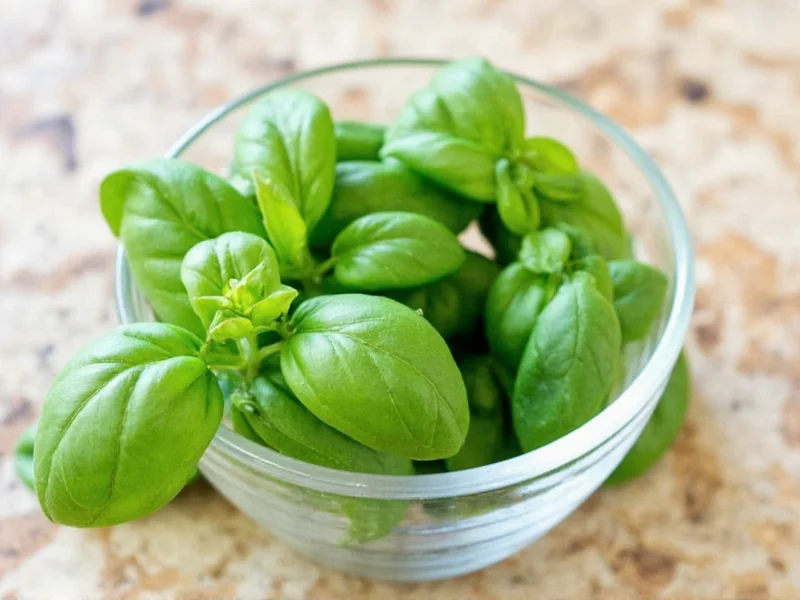Understanding herb conversions is essential for successful cooking, especially when your recipe calls for fresh basil but you only have dried basil available. The difference in moisture content between fresh and dried herbs significantly impacts their flavor intensity and proper measurement in recipes.
Why Fresh and Dried Herbs Require Different Measurements
Fresh basil contains about 85-90% water, while dried basil has most of this moisture removed through the drying process. This concentration means dried basil delivers a more potent flavor in a smaller volume. Chefs and food scientists generally agree that dried herbs are about 2-3 times stronger than their fresh counterparts.
The Standard Herb Conversion Ratio Explained
The widely accepted culinary standard for herb conversion is:
| Measurement Type | Fresh Herbs | Dried Herbs |
|---|---|---|
| Basic Ratio | 3 parts | 1 part |
| Teaspoon Equivalent | 1 tablespoon | 1 teaspoon |
| Cup Equivalent | 1 cup | 1/3 cup |
Applying this ratio to your specific question: 1/2 cup fresh basil equals 1.5 tablespoons dried basil (since 1/2 cup ÷ 3 = 1/6 cup, which converts to 2.67 tablespoons, but we typically round to the nearest practical measurement).
Practical Tips for Substituting Dried Basil in Recipes
When converting fresh basil to dried in your cooking, keep these professional tips in mind:
- Add dried herbs earlier - Dried herbs need time to rehydrate and release their flavors, so add them at the beginning of cooking rather than at the end like fresh herbs
- Store properly - Keep dried basil in an airtight container away from light and heat to maintain potency for up to 6-12 months
- Crush before using - Rub dried basil between your fingers before adding to release essential oils and maximize flavor
- Taste as you go - Since potency varies by brand and age, always taste your dish and adjust seasoning as needed
- Consider the dish type - For delicate dishes like salads or garnishes, fresh basil is preferable; for long-simmering sauces and stews, dried basil works well
Complete Fresh-to-Dried Herb Conversion Chart
While answering your specific question about 1/2 cup fresh basil to dried conversion, here's a comprehensive reference for other common herbs:
| Herb | 1 Tablespoon Fresh | Equals | Dried Equivalent | 1/2 Cup Fresh Equals |
|---|---|---|---|---|
| Basil | 1 tbsp | = | 1 tsp | 1.5 tbsp |
| Oregano | 1 tbsp | = | 1/2 tsp | 0.75 tbsp |
| Parsley | 1 tbsp | = | 3/4 tsp | 1.1 tbsp |
| Thyme | 1 tbsp | = | 1/2 tsp | 0.75 tbsp |
| Rosemary | 1 tbsp | = | 1/2 tsp | 0.75 tbsp |
Common Mistakes When Converting Fresh Basil to Dried
Many home cooks make these errors when substituting dried basil for fresh:
- Using equal measurements - Putting 1/2 cup dried basil instead of fresh will make your dish overwhelmingly herbal
- Adding at the wrong time - Adding dried herbs at the end of cooking doesn't give them time to rehydrate and release flavor
- Not adjusting for age - Older dried herbs lose potency, requiring slightly more than the standard conversion
- Overlooking recipe type - Using dried basil in dishes where fresh would be preferable (like caprese salad)
When Fresh Basil Is Truly Necessary
While dried basil works well in many applications, certain dishes genuinely require fresh basil for the authentic flavor profile:
- Pesto sauce (dried basil won't create the proper texture or flavor)
- Caprese salad and other fresh tomato dishes
- Garnishes where visual appeal matters
- Short-cooking dishes where dried herbs won't have time to rehydrate
For your specific conversion question about 1/2 cup fresh basil to dried measurement, remember that 1.5 tablespoons of dried basil will provide the closest flavor equivalent in most cooked dishes. This fresh basil to dried basil measurement ratio ensures your recipes maintain proper flavor balance without becoming overpowering.











 浙公网安备
33010002000092号
浙公网安备
33010002000092号 浙B2-20120091-4
浙B2-20120091-4